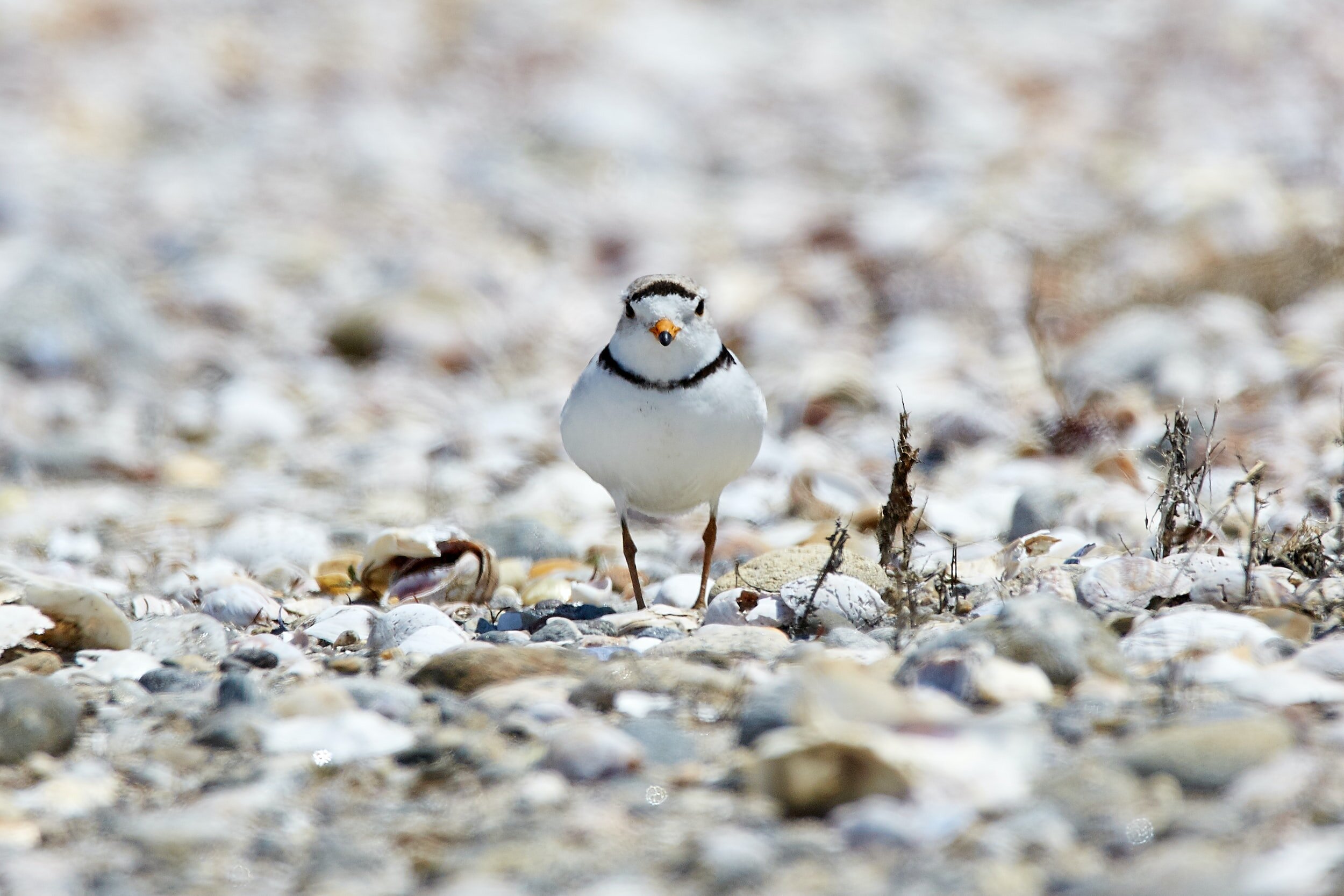As summer approaches and the weather begins to warm, remember that humans are not the only ones flocking to our beautiful Fire Island beaches. Piping plovers, one of the smallest shorebirds, are also gathering on the beach as their breeding season begins.
Piping plovers are endangered, and it is our responsibility to help them. The biggest issue they are currently facing is habitat loss, a problem caused by humans. As the summer starts, we can help plovers by watching out for them and respecting their space as we both enjoy the beach.
Piping plover mating season begins in mid-March, when these birds arrive on their breeding grounds and begin to make their nests. They nest above the high tide mark, in the soft sand just below where the grasses grow. Plovers often return to the same area and mate year after year. During May and June, plovers will lay an egg every other day until they have a complete clutch. The normal clutch size is four eggs but may be only three if the pair’s first nesting attempt is not successful. The plovers then go through an incubation period of 25 to 31 days. Once the young have hatched, they fledge (grow all their feathers and learn to fly) after 28 to 35 days (NYS Dept. of Environmental Conservation).
Sadly, because of their limited numbers, piping plovers have been designated an endangered species in New York State. They were threatened almost to extinction around the turn of the century, an extreme reached by hunting for meat and for sport. They received some protection after the passing of the 1918 Migratory Bird Treaty Act but are still being threatened by humans. Through development in coastal regions, driving in off road vehicles, and recreational activities, we have succeeded in greatly reducing the plovers’ habitat. The Atlantic Coast piping plover population consists of around only 800 breeding pairs, 200 of which reside in New York during breeding season. Last summer was their least successful breeding year in recent memory (NYS Dept. of Environmental Conservation).
As we move into this year’s piping plover breeding season, we must take action to protect this species. Their health is incredibly important as they are an indicator species, meaning they’re sensitive to their surroundings and therefore act as a gauge for the environmental well being of an ecosystem. If their numbers were to decrease sharply, that would be a warning that something was not right in the ecosystem and other species may soon follow suit. Thankfully, it is easy for us to help (CBS News)
Sections of the beach will be fenced off by the National Parks Service, but it’s important to be aware on all areas of the beach. Piping plovers are quite small, and their young and eggs are even smaller. In addition, their sandy speckled coloring camouflages them quite well. Even down past the area where they nest, it’s important to watch your step as the piping plovers make their way down to the water to feed. Other steps you can take to protect the plovers including keeping your dog on a leash, carrying out your trash, and keeping your kites away from plover nests (they can be seen as aerial predators) (City of New York).
In addition to helping the piping plovers, you will also be helping yourself. Plovers eat fly larvae, marine worms, beetles, and other small organisms, so your actions are also creating a more pest free beach experience for you (Animal Diversity).
I have been a member of the Fire Island community for my whole life, and I look forward to seeing the plovers return each summer. In addition to being adorable, the fact that they choose our beach to birth and raise their young is an honor. I don’t want there to be a summer when they no longer make that choice.
The piping plovers are an iconic part of the shoreline, and one that needs all hands on deck to protect. So, the next time you’re at the beach, just remember to share the shore and look out for our little feathered friends.
Dana Hillebrecht is an Environmental Studies major studying at Bowdoin College. She has been a resident of Fair Harbor her entire life.
































